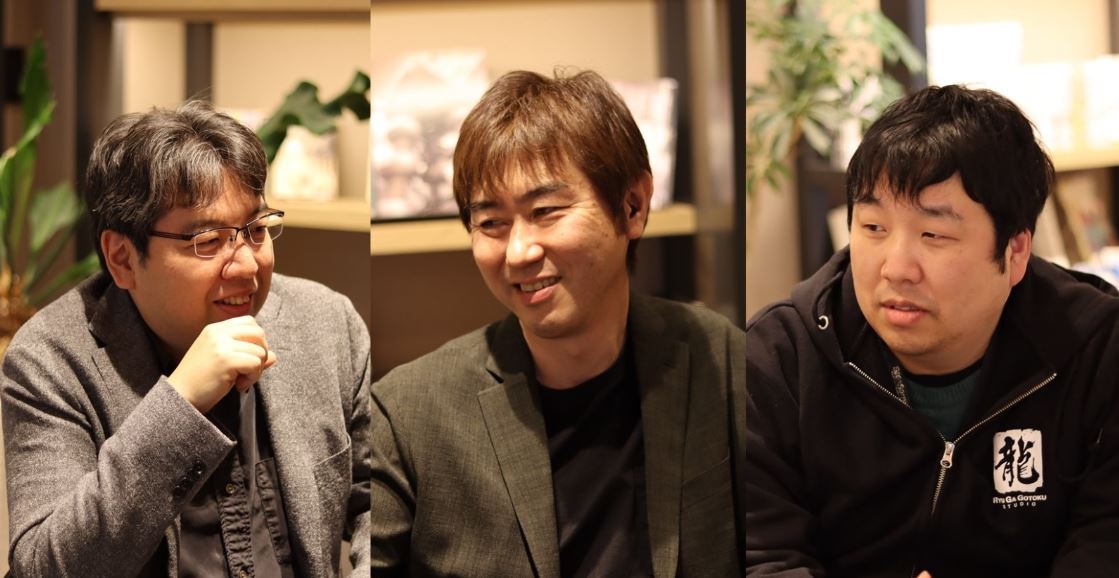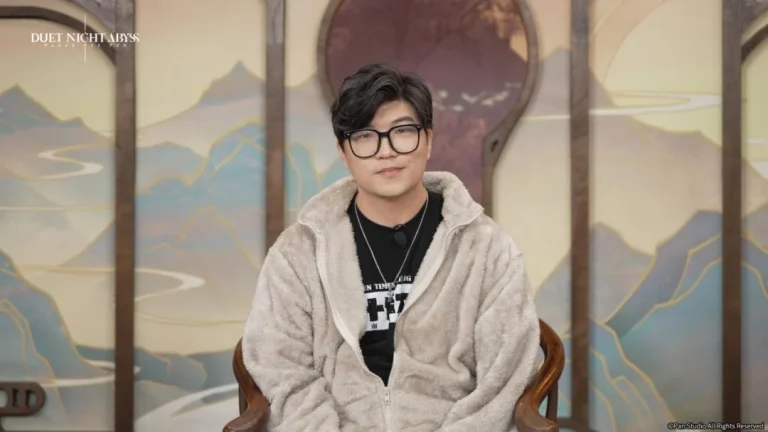Like a Dragon: Infinite Wealth, the latest entry in Sega’s Like a Dragon series, sold over one million units worldwide within a week of its release, breaking the franchise’s past records. But the grander the scale of a title, the easier it is for the individual efforts behind it to go unnoticed. That’s why we collaborated with SEGA to interview members of each section of RGG Studio and find out all there is to know about their meticulous work on the Like a Dragon franchise.
In this edition, we speak to RGG Studio’s technical director Yutaka Ito, programming section manager Tomoaki Nakamura, and resource lead Masashi Oda about the technical challenges and milestones they achieved in Infinite Wealth.
The new and improved Live Command RPG Battle system was made possible by the action game foundation of past titles
―Could you tell us about your positions at RGG Studio and what kind of work you do?
Yutaka Ito (Ito hereafter):
I’m Ito, the technical manager of RGG Studio. I was the technical director for Like a Dragon: Infinite Wealth.

Tomoaki Nakamura (Nakamura hereafter):
I’m Nakamura, the programming section manager. I’m mainly in charge of battles in the Like a Dragon series. For Infinite Wealth, I mostly worked on battles while supervising the entire programming team.
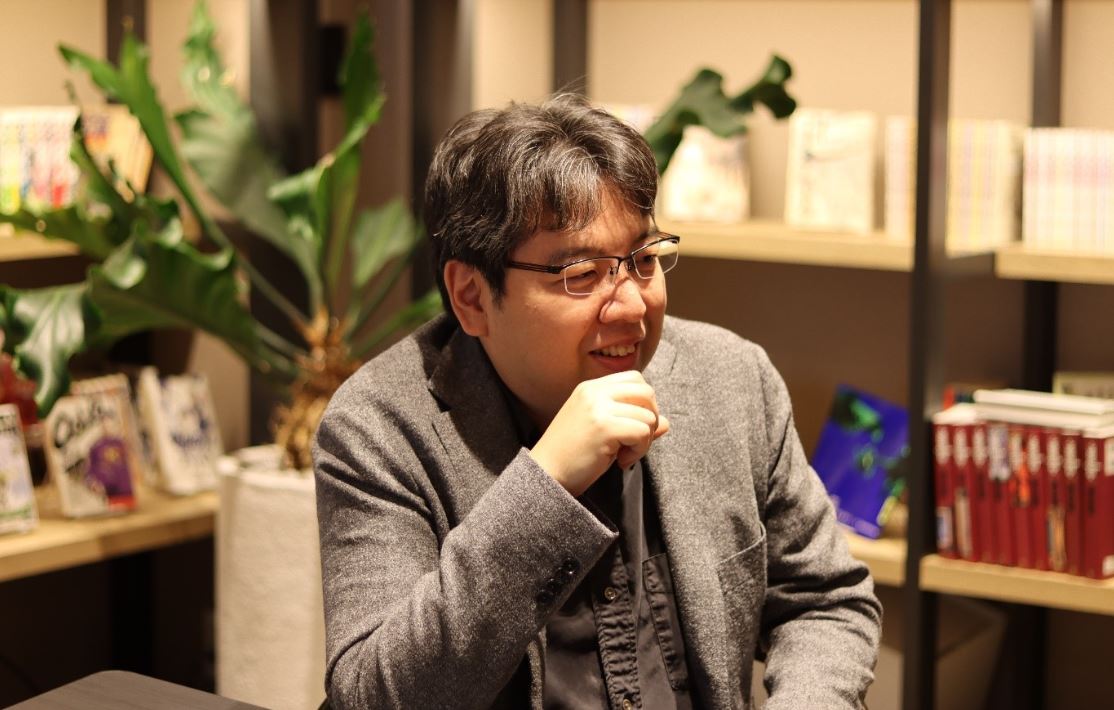
Masashi Oda (Oda hereafter):
My name is Masashi Oda, and I’m the lead programmer. In the Like a Dragon series, I am mainly involved in resource management for environments and objects. I was involved in Infinite Wealth as the resource leader, and I did the programming for the main part of Dondoko Island.

―Infinite Wealth sold a million units faster than any other game in the series. Ito-san, please tell us what you think about these figures.
Ito:
We consider it our mission to make good games, and some of our titles tend to sell slowly over time, so I’m generally not that concerned about numbers. However, it took a lot of money, people, and time to develop Infinite Wealth, so I’m honestly relieved that so many people are picking up the game.

―I’d like to ask you about the technical challenges you faced while working on Infinite Wealth. Let’s start with the battles. Nakamura-san?
Nakamura:
The battle system in Infinite Wealth is an evolution of the “Live Command RPG Battle” system we created for Yakuza: Like a Dragon. This was a new battle system that combined the action game mechanics of past Like a Dragon games with command-based RPG mechanics. We went through a lot of trial and error to develop it for Yakuza: Like a Dragon, so it was inevitably a bit rough around the edges. Our goal for Infinite Wealth was to brush up on all these points. One of the major improvements we made is the ability to move the characters. This allowed for more strategy and gave the battle system more depth – for example, by allowing party members to coordinate with each other by moving into appropriate positions and taking actions as the battle progresses in real time.
―I did feel like it became easier to coordinate with allies in Infinite Wealth compared to Yakuza: Like a Dragon.
Nakamura:
That’s right. Also, in the previous title, it sometimes took time to get close to the enemy to attack, depending on the location. That’s why we improved the AI involved in this process and increased the tempo – all while maintaining the general framework of the Live Command RPG Battle system.
―There were also mechanics that you were able to implement precisely because the system is based on an action game framework, I assume?
Nakamura:
Indeed! A very clear example of this would be Kiryu’s Dragon’s Resurgence, which allows you to freely perform action moves in the middle of a command-based battle. I wanted to depict Kiryu’s extraordinary strength as something unbound even by the command-based battle system, which is why I insisted on implementing this feature (laughs). When you press down on the R2 button, the command menu shatters, and you can go around fighting action-game-style. This was only possible because the game is based on an action game framework.

Ito:
The fact that we were able to make characters move during battles, coordinate and perform weapon attacks based on their positions was also thanks to the title having an action game base. However, Dragon’s Resurgence, which is basically a full-blown action battle in the midst of a command-based battle, was a big technical challenge for us.
―I love it when Kiryu shouts “It’s over!” when it’s activated. Dragon’s Resurgence feels very exhilarating, but I understand it was quite difficult to implement.
Nakamura:
It gave us a lot of trouble (laughs). Infinite Wealth is designed to be an RPG, so it goes without saying that it doesn’t envision full-fledged action battles. Also, the ability to freely attack enemies during command-based battles is overwhelmingly powerful, so we had to be careful not to upset the game’s balance too.
Oda:
To begin with, the city in Infinite Wealth is designed with an RPG in mind, not an action game (laughs). So, if we made it a full-fledged action game, the system would not be able to withstand it.

―Dragon’s Resurgence can be activated anytime and anywhere during battle as long as your Hype gauge is full… that’s a lot of work now that I think about it.
Nakamura:
Yes, it is. For example, if the player were to ignore the enemy and simply start walking, the system would break down, so we also had to limit things like the range of movement.
―Now that you mention it, there’s that blue ring-shaped aura that appears on the field. Was that your way of telling players not to go outside of the allowed range?
Ito:
Actually, yes (laughs). We’re always thinking of ways to prevent the player from feeling that the system is restricting them from doing something, this applies not only to Dragon’s Resurgence.
Nakamura:
There are many technical issues and limitations that planners and designers don’t understand, so I think that proposing safety margins in terms of the game system is an important role of the programmers.
―So, even as programmers, you place importance on thinking from a game design perspective. Ito-san, as the leader of the team, do you expect your programmers to do more than just program based on the proposals that come from the planners?
Ito:
It’s not so much that I demand something extra, but rather that the planners at RGG Studio have always been eager to do unheard of things. As programmers, our pride doesn’t allow us to say that we can’t do something “due to technical reasons” (laughs). We would rather say: “Alright, we can do it given these conditions are met.” Even if we can’t do everything the planners want, we will take it upon ourselves to propose a line of thinking that works and implement it. This is the kind of work style I expect from my team.
The smooth day and night cycle on Dondoko Island had been on the drawing board since Yakuza 3
―Dragon’s Resurgence, which we just talked about, is a technical feature that even players can tell must have been difficult to pull off. I’d like to hear about some mechanics you worked hard to include that people are less likely to notice. For example, I remember your art team mentioning how much work you put into the blend shapes that control the fine movements of Ichiban’s hands (seen in the close-up scene of him gripping a doorknob).
Nakamura:
As a programmer, the blend shapes that transform the character models were a new challenge. We went through a lot of trial and error when looking for ways to depict fine details using new technology. One of these was the way the flesh of Ichiban’s hand gets squished around the doorknob as he grips it. By the way, since we worked so hard on this scene, we wanted to make sure it remains in players’ memories, so we made it so that a trophy is acquired the moment the doorknob is turned. In the previous games, trophies were usually acquired on the save screen after each chapter, but in Infinite Wealth, we made it so that the game automatically takes a screenshot of scenes that will leave an impression on the player, one of which was the doorknob scene.
―Oh! So that’s what that trophy meant!
Oda:
As for me, I think people were surprised by the seamless passage of time on Dondoko Island, based on reactions I’ve seen in streams and the like.
In previous Like a Dragon games, the lighting was fixed for each scene depending on whether it was daytime, evening, or nighttime. However, for Dondoko Island, we had to depict real-time changes, so we tried out a new method instead.
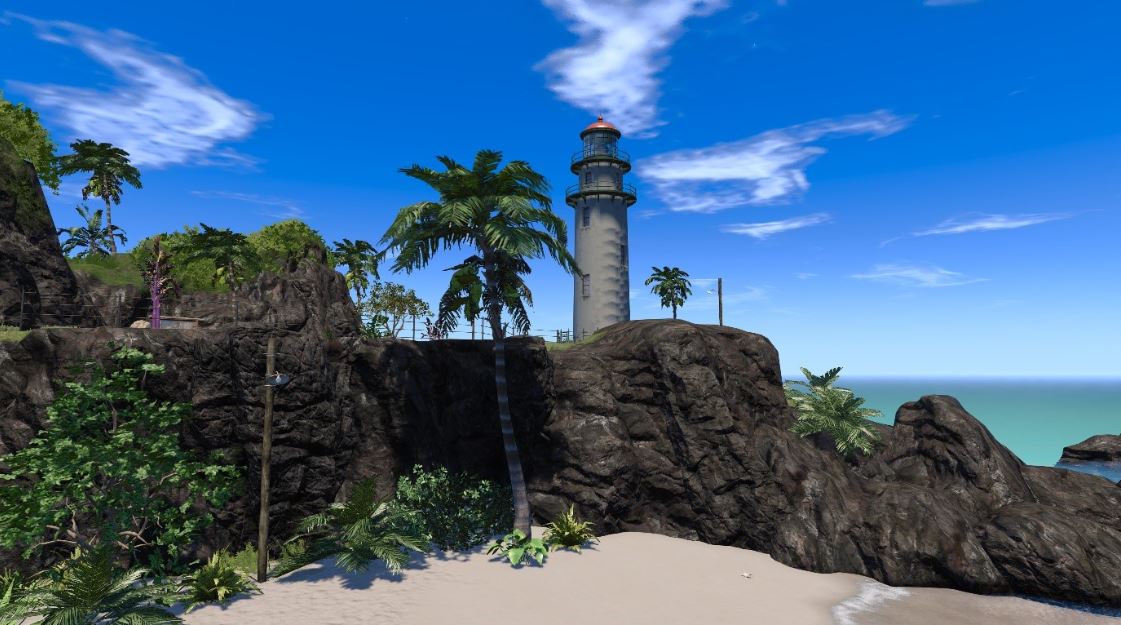


―Now that you mention it, I don’t recall environments changing in real time in previous games.
Ito:
Actually, we had been looking into real-time day and night transitions since Yakuza 3. However, since the passage of time in most of the Like a Dragon games is dictated by the scenario, it felt strange to have the cycle of morning, noon, and night repeat itself regardless of what’s happening in the scenario, so we never implemented it. In Infinite Wealth, we were able to finally implement it, albeit only on Dondoko Island.
―So, it was something you guys had hoped to implement since Yakuza 3. Congratulations!
Everyone:
Thank you very much (laughs).
―Ito-san, you have a lot of experience, but was there anything challenging for you in making Infinite Wealth?
Ito:
This isn’t about the main game itself, but the most difficult thing technically speaking was putting Infinite Wealth’s demo into Like a Dragon Gaiden: The Man Who Erased His Name (hereafter referred to as Gaiden).
―Oh, the special demo that’s unlocked after completing Gaiden.
Ito:
We worked on Gaiden and Infinite Wealth in parallel with the same team, and we had to complete the demo version of Infinite Wealth in time for Gaiden’s deadline, so it was double the struggle (laughs).

―It’s not about just taking the game’s beginning and putting it in there, is it?
Nakamura:
Indeed. It’s a very large game, so even just converting the data was a troublesome task. It took half a day to convert the data of Infinite Wealth’s demo version. Then, integrating it into Gaiden and converting it took another half a day. Usually, we let automatic conversion run during the night, but when I arrived at the office on the day of the deadline, I found that conversion had stopped due to a hardware-related issue. We had things like this happen a lot, and it was really difficult in various ways.
―All I can say is, good job…
Building a team for parallel content development
――I understand that Gaiden and Infinite Wealth were developed concurrently by the same team. I assume that Infinite Wealth’s high-volume side content such as Sujimon League and Dondoko Island was also produced at the same time. What kind of workflow did you follow during development?
Ito:
Each mini-game or piece of side content is created by a small development team and linked to the main game at the implementation stage. As you know, we have small-scale mini games, but also voluminous side content such as Dondoko Island and Sujimon League. They are all developed in parallel with the main story as if they were independent games.

―So, this system of creating content concurrently is the driving force behind the Like a Dragon series’ development.
Ito:
It’s common for Like a Dragon games to contain a lot of content in addition to the main story, so we’ve kind of become accustomed to this way of working. I must say though, that the content for Dondoko Island was so high-volume and rich that we had to allocate more programmers than usual and implement new systems, which was quite challenging.
―The scale of development grew, but it was still like an extension of the usual RGG Studio?
Nakamura:
Yes. We try to communicate proactively so that the speed of development doesn’t slow down even when the scale of the project increases. Also, when we (the programmers) submit ideas, we often make prototypes and present them, rather than write up documents.
―I see, so you have the others look at the implemented program to see what its like.
Nakamura:
When you have a prototype, it’s easier for the planners to come up with ideas about how to make things more interesting, and it’s easier for the designers to suggest what kind of resources could be used to improve the design. This results in a better product and greatly speeds up the development process.
―Ito-san, you once posted on X that there are many cases of the programmers making prototypes on their own accord, showing them to the team and having their ideas implemented. Were there any ideas that came directly from the programmers in Infinite Wealth?
Ito:
I wrote “on their own accord” in that post, but let me just add that we, of course, follow proper procedure when developing games and communicate with others as we work (laughs). To give a specific example, Infinite Wealth has a vehicle called the Street Surfer Segway, and the automatic driving function was proposed by me.
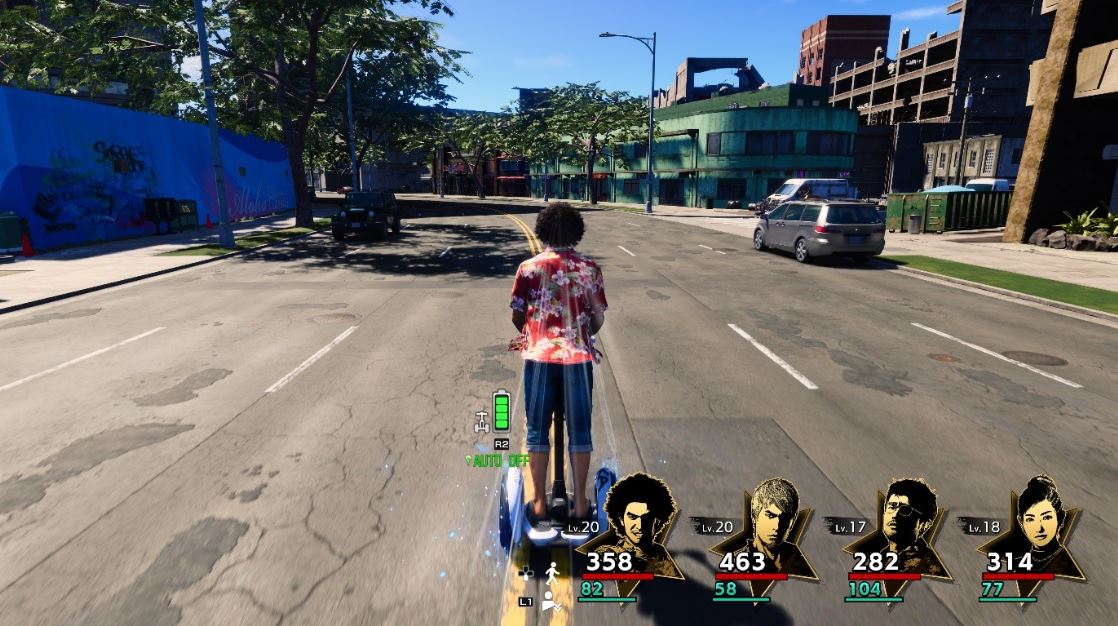
――The Street Surfer Segway really came in handy after I realized it could automatically take me to a specified location.
Ito:
I’m happy to hear that. During development, Yokoyama (Masayoshi Yokoyama, Director of Ryu Ga Gotoku Studio/Executive Producer) suggested that some players might feel bored moving around Hawaii, with it being our most expansive map to date. At first, we discussed increasing the speed of the Street Surfer Segway, but this came with technical issues, and we also thought it would be better not to make it too fast, since it’s a vehicle meant for tourists to drive around Hawaii’s urban area. Eventually, we implemented the system of searching for routes and automatically travelling to a specified destination. We thought this would allow players to be on their phones while traveling (laughs).
―You’re very with the times. Were there any other suggestions from the programming team?
Oda:
We have a veteran programmer who was in charge of the insects on Dondoko Island, and he was very particular about creating insect-like motions. For example, when you run towards rhinoceros beetles, they normally fly away and land on a tree, making them hard to find, but he looked for ways to make them easier to spot.

Optimizing for multiple console generations
―Please tell us more about the hardware-related side of things. Infinite Wealth is compatible with next-generation consoles such as the PS5 and Xbox Series X|S. Was this hard to pull off?
Ito:
The resources themselves were created with the higher-spec consoles in mind, so we had to adapt them for the lower-spec consoles in terms of performance – which was not easy at all.
We would like to avoid limiting ourselves because of performance as much as possible, but not everyone plays the Like a Dragon series on higher-end consoles, so we would like to figure out a future plan on this at some point.
―I feel like the Like a Dragon series is very keen on optimization, with Infinite Wealth even being Steam Deck Verified at launch.
Nakamura:
For Deck Verified, we actually purchased a Steam Deck and checked the LCD resolution and hardware.
―So, you made sure to check with your own eyes.
Ito:
Since there is no difference in game content depending on the model, the optimization work only involves adjusting the resolution and frame rate. Recently, however, we have been using upscalers to tune even lower spec models to make them look better.
Nakamura:
Using the upscaler makes it so that players don’t really notice much of a drop in resolution when actually playing the game, even if the resolution is different from the original.
―I’d like to once again quote a post made by Ito. You once said that one of your goals for Gaiden was to have “the largest number of people in a battle in the series’ history.” Infinite Wealth also has some crowded scenes, but did you encounter any technical difficulties because of them?
Nakamura:
Since the beaches of Hawaii have wide, open views, we had more characters being displayed than ever before – at first, the processing couldn’t keep up at all. Therefore, we made an effort to preserve the lively Hawaiian atmosphere by omitting processing for parts that were not visible on-screen and using flat boards called “billboards” for characters that appeared far away in the distance, thereby omitting animation processing.
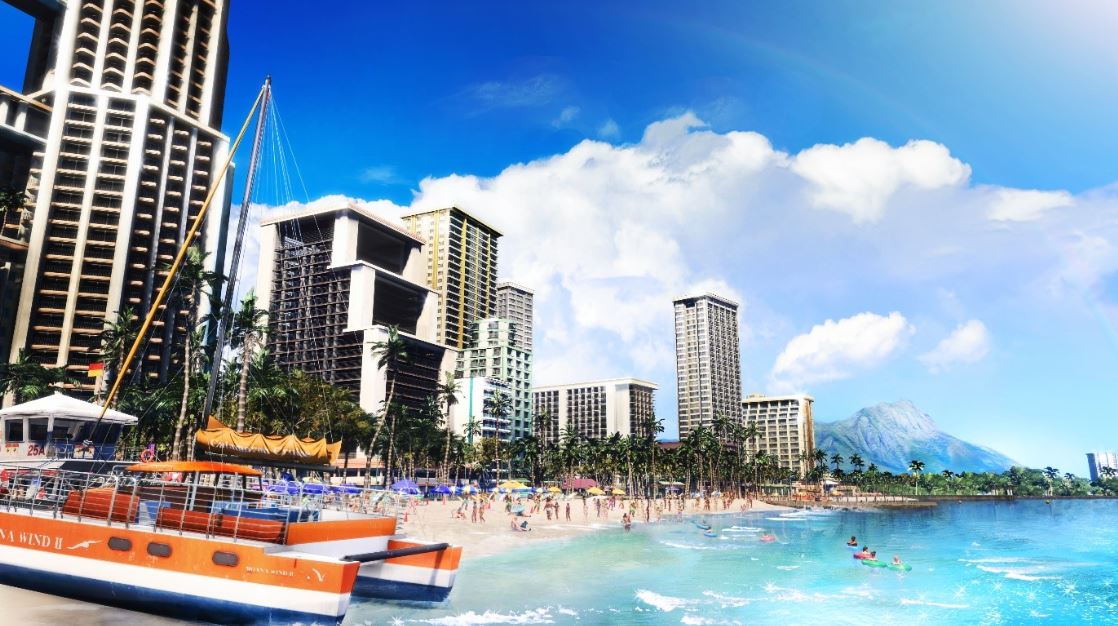
―I didn’t notice that at all!
Nakamura:
That means our effort was worthwhile (laughs).
―Did these solutions come from your experience in developing the series?
Nakamura:
It is partly due to the accumulation of experience, but I think it’s also the result of the “performance improvement meetings” we hold on a regular basis for each title. Everyone, including the designers and planners, discusses the parts of the game that are too heavy and what can be done to lessen load. We work not only on technical solutions, but also adjust the game specifications and design-related data.
Ito:
The designers at RGG Studio are very talented game creators, and they not only pay attention to the quality of their graphics, but also consider whether it’s feasible to use them in-game. For example, they will ask if certain models of resources can be used without compromising frame rate, which is really helpful for us as programmers.
―Are there any rules for the non-programming teams that, for example, forbid certain things that would make it hard for the programmers?
Oda:
Although there are no strict rules, the designers and planners usually consult with us in advance on things that may be difficult to implement load-wise. At RGG Studio, we don’t just finish our own task and have the next person deal with the aftermath. From start to finish, we go through trial-and-error processes and communicate with each other through meetings to raise the game’s quality.
What changed with the switch to the Dragon Engine?
――I can see that you place great importance on communication and coordinating with each other. I would also like to hear about some of your impressive technical feats from past titles, not only Infinite Wealth.
Ito:
For me, it was the environment control implemented in Ryu Ga Gotoku Kenzan! Up until Yakuza 2, Kamurocho was divided into small areas, and once you reached the end of an area, you would transition into the next one. But in Ryu Ga Gotoku Kenzan!, we had to completely redesign the system so that players could walk seamlessly across a large map. It also became possible to control the camera freely, so we had to make sure Gion looked vivid no matter where you looked. This was my first time developing for the PS3, so everything was a challenge.
―I assume that experience came in handy in later titles.
Ito:
It was the first time I had to read scientific papers and study algorithms, and it was also my first time developing a game while studying new hardware, so it was a very valuable experience.
―It really was a time of technological evolution for the series, with the switch to PS3 with Ryu Ga Gotoku: Kenzan! and Yakuza 3. I understand there was a lot of blood, sweat, and tears put in by the programmers.
Ito:
Indeed. There were also many challenges that were unique to those times. For example, you had to be able to play Ryu Ga Gotoku: Kenzan! without installing it on the hard disk of the console, so I remember us tweaking even the positions the files got recorded on to shorten loading times.

―That’s interesting. It makes me want to play Ryu Ga Gotoku: Kenzan! on the PS3 again.
Nakamura:
As someone who was mainly in charge of battles, I always had a hard time with the transitions between the adventure sections and the battles. We introduced seamless battles in Yakuza 3, but at the time, the people in charge of the adventure gameplay and the battle gameplay were completely different, as were their development methods. That’s why, for example, the thug who attacks you in the street and the thug who actually fights you in the battle were different people, when looked at from inside the game. When the battle commences, the battle character is overlaid in the same position as the adventure character. In other words, we sneakily swapped them to make it appear seamless.
―Does the remastered version also work this way?
Nakamura:
It does. We used that method until Yakuza Kiwami. Then, when we started development of Yakuza 6: The Song of Life (hereafter Yakuza 6), we decided that we needed a game engine that could provide a different solution to the problem. Thus, we made the Dragon Engine, which allowed us to use the same characters for both battles and adventure sections.
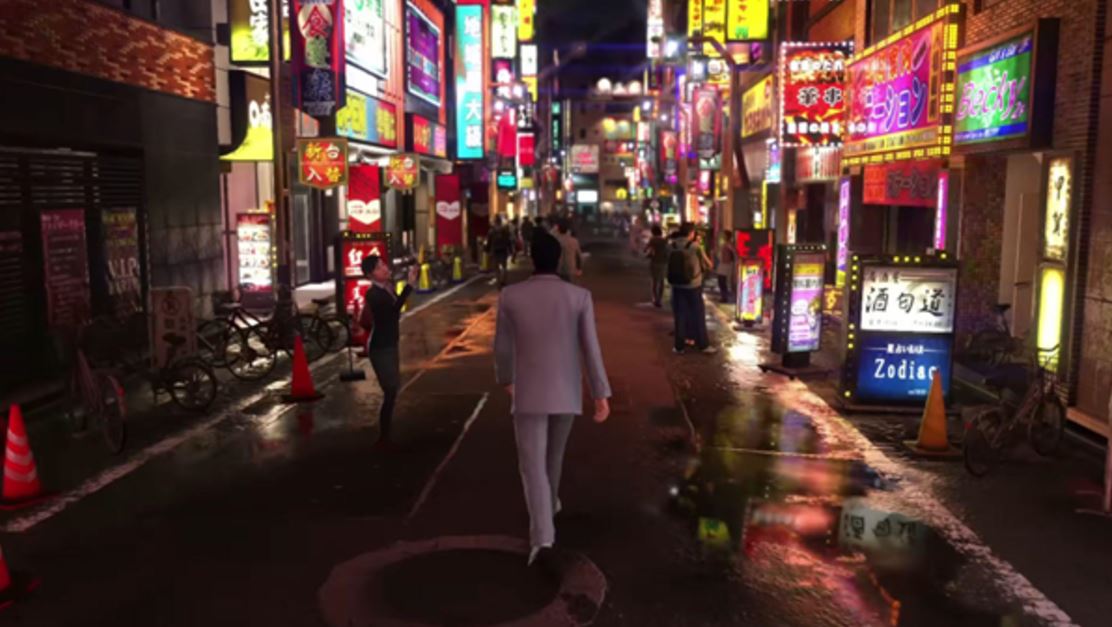
―I never knew that that was your motivation for creating the Dragon Engine.
Oda:
We had many other reasons, but our main goal was to improve the graphics. When we switched to the Dragon Engine for Yakuza 6, we pushed the memory to the limit to make Kamurocho look as beautiful as possible. However, in Judgement, we introduced drones that allowed you to look into the distance from 10 meters in the air, and in Lost Judgement, we introduced high-speed skateboard riding – so we had to come up with more memory-friendly solutions with each title (laughs). We go through a lot of trial and error to decide what to cut and what to keep in each title, and thanks to our experience in making these decisions, Infinite Wealth’s Kamurocho can run using half the memory of Yakuza 6’s.

―Are there technical innovations that you would like to strive for in the future?
Ito:
The Like a Dragon series has evolved technologically with each title, but at the core of the series is the Dragon Engine that was developed for Yakuza 6. In this sense, personally, I’d like to try to make a new Dragon Engine specialized for high-spec consoles, and with it, to develop a new action-adventure game. This is just what I personally feel, so it has nothing to do with the studio’s actual plans (laughs).
―Thank you for your time! I’m looking forward to seeing high spec Like a Dragon titles in the future.
Like a Dragon: Infinite Wealth is available for the PC (Steam), PS4/PS5 and Xbox One/Xbox Series X|S.
[Interviewer, editor: Ayuo Kawase]
[Writer, editor: Yuuki Inoue]
[Translation: Mateja Matic]
[English language editor: Amber V]

